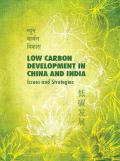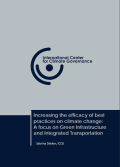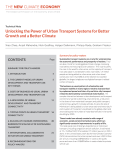
With the recognition on the importance of partnership and collaboration to tackle climate change, the project on Low Carbon Development for China and India seeks to understand learnings on options, barriers and success stories on implementability of policies and programmes promoting low carbon development in China and India.
Based on an understanding of similarities and differences between China and India, in 2012, The Energy and Resources Institute of India (TERI), National Center for Climate Change Strategy and International Co-operation, Central University of Finance and Economics and Zhejiang University launched one of the first collaborative efforts between research institutes in China and India on low carbon development. The intended outcome of the project is supporting policy development by facilitating south-south cooperation, creating relevant knowledge and building capacities.

This year’s report includes an in-depth look at energy efficiency developments in the transport sector and in finance. Huge new waves of demand for mobility are emerging in OECD non‑member economies, bringing with them the challenges of pollution and congestion already faced in OECD countries. Fuel-economy standards and other policies are expected to help shape the market for more energy-efficient vehicles in the years to come. In financial markets, energy efficiency is becoming an important segment in its own right, aided by a growing range of financial products. This report documents the growing scale and diversity of energy efficiency products and actors.
Finally, this report reviews national energy efficiency market developments in various jurisdictions around the world, including Canada, China, the European Union, India and Italy. These case studies provide snapshots of specific energy efficiency sub-markets, and insights into how these markets may evolve in the coming years.

Green infrastructure and integrated transportation are the two dominant green best practices that cities around the world are implementing and that research related to the climate change impacts of extreme temperatures and air pollution advocate for. Are these policies enough to address climate change and its impacts on human health, now and in the future? The answer to this question depends on whether cities choose to continue with the same status quo policies or develop new policies in the light of climate change.

This report presents the current progress of Italy towards a green economy. It provides a clear overview of the diffusion of green businesses and practices within the manufacturing, building and trade industries, and the primary and tertiary sectors. The report highlights that about 40% of Italian firms are either:
- Core Green (i.e. firms that produce environmental goods and services, or firms whose outputs have low environmental impact); or
- Go Green (i.e. firms that are taking steps towards the greening of their supply chains and business practices).
Additionally the report offers an overview of the modern state of some themes which are strategically important for the transition to a green economy in Italy. In specific the report analyses the diffusion of renewable energy technologies, the improvements in energy efficiency, the reduced emissions of pollutant gases, circular economy, eco-innovation, land and natural resources management, ecological agriculture and sustainable transport.

Sustainable transport systems are crucial for underpinning the economic performance and prosperity of nations. They are also critical for tackling global climate change and reducing local air pollution. This is particularly the case in the world’s urban areas.
This paper provides an overview of the available evidence on the link between the effectiveness of transport systems and economic, social and environmental performance. It starts with a short overview of the main trends in urban transport, and then covers the costs of the current model of urban development and transport use and the benefits of an alternative model. It discusses potential tipping points in transport mobility worldwide and barriers to scaling up positive change. Finally it concludes with an overview of international collaborative initiatives on urban transport and with some recommendations for policy-makers.
